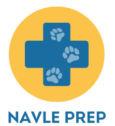The North American Veterinary Licensing Examination (NAVLE) is the critical step for vet school graduates aiming to practice veterinary medicine. It’s a rigorous, standardized test ensuring candidates have the essential knowledge and skills to care for animals effectively.
Here’s what the NAVLE breakdown covers:
- The Purpose and Structure of the exam
- Detailed Content Areas and Question Distribution
- Scoring particulars and Registration essentials
- Requirements for Eligibility and practical Preparation Tips
With this guide, you’ll glean insight into each facet of the NAVLE, strategically setting you up for success as you embark on your professional journey.
- Introduction to NAVLE
- What Is the Purpose of the NAVLE?
- Understanding the NAVLE Structure
- NAVLE Content Areas and Question Distribution
- NAVLE Scoring Explained
- How to Register for the NAVLE
- NAVLE Eligibility Requirements
- Preparation Tips for the NAVLE
- NAVLE Exam Dates and Deadlines
- What to Expect on Test Day
- Retaking the NAVLE: Rules and Advice
- FAQs About the NAVLE
- Conclusion: Empowering Your Journey Towards Veterinary Licensure
Introduction to NAVLE
When you’re aspiring to become a licensed veterinarian in North America, passing the North American Veterinary Licensing Examination (NAVLE) is an essential milestone on your professional journey. This rigorous assessment measures your preparedness to practice veterinary medicine and is the final hurdle before you can secure your credentials. Administered by the International Council for Veterinary Assessment (ICVA), the NAVLE is a standardized test that evaluates your knowledge across a broad spectrum of veterinary science.
Understanding the NAVLE breakdown is crucial because this knowledge can help you focus your study efforts more accurately. With a comprehensive overview of the exam structure, content areas, and scoring methodology, you can gear up for your exam confidently, knowing you’ve left no stone unturned in your preparation.
What Is the Purpose of the NAVLE?
At its core, the NAVLE serves a gatekeeping function, ensuring that only qualified individuals enter the veterinary profession. The exam is tailored to assess your comprehension and application of scientific principles that underpin veterinary practice. It covers everything from diagnostics to therapeutics and surgery, across a variety of animal species—both large and small.
Think of the NAVLE as a bridge between your veterinary education and the real-world scenarios you’ll face in clinical practice. Its purpose transcends memorization of facts; the NAVLE tests your ability to integrate knowledge and apply it practically, something you’ll need to do every day in your professional life.
Understanding the NAVLE Structure
When it comes to the NAVLE breakdown, the structure of the examination is paramount to grasp. The NAVLE consists of 360 multiple-choice questions, which you will tackle over a seven-hour period. The questions are a mix of standalone and case-based items, each contributing to evaluating your clinical reasoning skills.
The exam’s format includes:
- Core Areas: Areas such as medicine, surgery, and diagnostics are central components.
- Species Distinctions: Specific portions of the exam focus on various animal species like dogs, cats, horses, and livestock.
- Visual Aids: Many questions incorporate visual components—like radiographs or anatomical diagrams—to simulate the type of information you’d evaluate in practice.
A proactive approach would be to familiarize yourself with practice tests that reflect this structure, so you can navigate the real exam smoothly.
NAVLE Content Areas and Question Distribution
The NAVLE breakdown by content areas reveals the weight given to various aspects of veterinary medicine:
- Basic Biological and Clinical Sciences: This foundational knowledge is essential and forms the bedrock of the exam.
- Species-Specific Medicine: You’ll be tested on your understanding of species-specific diseases, common presentations, and case management.
- Diagnostic Procedures: You will need to know diagnostic strategies for multiple species, as well as understand how to interpret the results.
For your preparation, hone in on these pillars of the NAVLE content. Prioritize your study time in proportion to these areas’ prevalence within the NAVLE to optimize your performance.
NAVLE Scoring Explained
The magic number you’ll be aiming for on the NAVLE is 425. This is the passing score on a scale that ranges from 200 to 800. It’s a criterion-referenced standard, which means it isn’t graded on a curve, but rather, it evaluates whether your performance meets the established criteria for minimum competence in veterinary medicine.
Your score will reflect not just a tally of correct answers but an assessment of your ability to demonstrate the practical application of your veterinary acumen. To deepen your comprehension of the scoring methodology, review the information provided by the ICVA in the context of your preparation strategy.
How to Register for the NAVLE
Starting the NAVLE application process can be as daunting as the test itself, but it doesn’t have to be. The process includes submitting two key applications: a general NAVLE application to the ICVA and a state or provincial credential application, depending on where you plan to be licensed. Here’s how to get started:
- Check Eligibility: Ensure you meet all eligibility requirements, such as being a graduate or final-year student of an accredited veterinary program.
- Understand Deadlines: The NAVLE has specific testing windows in the spring and fall. Align these with your graduation timeline.
- Gather Documentation: This might include transcripts, proof of enrollment, or other necessary paperwork.
- Pay Fees: The application includes a fee which may vary, so be prepared for this expense as part of your budget planning.
These steps are your first foray into the NAVLE experience. Successfully navigating this process will put you on the right path toward your goal—becoming a licensed veterinarian.
NAVLE Eligibility Requirements
Eligibility to sit for the NAVLE is not a one-size-fits-all criterion. To put it simply, if you’re a senior veterinary student at an accredited school, you’re in the clear. However, graduates from non-accredited schools must complete additional certification, such as the ECFVG or PAVE program.
To delve into the specifics:
- Accredited School Seniors: If you’re a student in your final year at an AVMA (American Veterinary Medical Association) accredited school, you’re eligible.
- Graduates of Non-Accredited Schools: For those who have attended a non-accredited institution, completing the certification steps of programs like ECFVG (Educational Commission for Foreign Veterinary Graduates) or PAVE (Program for the Assessment of Veterinary Education Equivalence) is necessary before eligibility is granted.
Check out the full eligibility details at ICVA, so you’re well-informed and ready to register.
Preparation Tips for the NAVLE
You might be wondering just how you can prepare for a test as comprehensive as the NAVLE. Your preparation is critical to overcome this challenging hurdle. Begin by creating a well-rounded study plan and incorporating a variety of resources.
Here are some top study tips you should consider:
- Leverage Practice Exams: Familiarize yourself with the exam format by taking plenty of practice exams.
- Use Recommended Resources: Tap into valuable materials such as study guides and the core lists of veterinary textbooks and journals.
- Stay Organized: Set a study schedule that allows you to cover all topics thoroughly without overwhelming yourself.
- Understand Your Learning Style: Tailor your study methods to what works best for you, whether it’s group study or solo review sessions.
Your diligence in following these suggestions can set the stage for your success when you come to face the NAVLE.
NAVLE Exam Dates and Deadlines
Missing an exam date or registration deadline can set your journey back. Ensuring you’re aware of the NAVLE’s scheduling will keep you on track. Generally, there are two primary testing periods to look out for:
Fall Testing Window — usually runs from the beginning of November through mid-December.Spring Testing Window — takes place for a brief period from the start of April.
Each year, these windows are your opportunity to take one giant leap towards veterinary licenship. Always verify the exact dates and deadlines at InSpira to prevent any potential mishaps in your planning.
What to Expect on Test Day
On the day of your NAVLE, it’s natural to feel a mix of excitement and nerves. A smooth test day experience begins with being prepared and understanding what to expect.
Remember to bring:
- A Valid Government-Issued ID: Ensure it matches the name on your Admission Permit.
- Your Candidate Identification Number: Without it, you won’t be able to sit for the exam.
Expect to adhere to strict examination rules, and refrain from bringing prohibited items into the testing center. For detailed information about the test day procedures and policies, visit the ICVA website.
Retaking the NAVLE: Rules and Advice
If your first attempt at the NAVLE doesn’t go as planned, don’t lose heart. You’re allowed up to five attempts. However, starting from the 2024-2025 testing cycle, any subsequent attempts beyond the fifth will require an appeals process.
In preparing to retake the NAVLE:
- Reflect on Previous Attempts: Analyze your performance to identify areas needing improvement.
- Switch Up Your Study Techniques: If your previous methods didn’t yield the desired results, try different strategies that might work better for you.
Always check the most recent rules and regulations regarding retakes on the ICVA website.
FAQs About the NAVLE
You likely have many questions as you prepare for the NAVLE. Here’s a rundown of some frequently asked questions you might find helpful:
- What is the exam format?
- How is the exam scored?
- Can accommodations be made for disabilities?
- What’s the policy on retaking the exam?
Finding answers to these questions will arm you with the knowledge to confidently approach your NAVLE preparation.
Conclusion: Empowering Your Journey Towards Veterinary Licensure
Your journey to becoming a licensed veterinarian is challenging, yet immensely rewarding. Acquainting yourself thoroughly with the NAVLE breakdown, from eligibility requirements to exam day logistics, is your roadmap to success. Embrace this opportunity to demonstrate your ability and commitment to veterinary excellence. With the right preparation, mindset, and resources, you’re well on your way to achieving your veterinary license and contributing to the health and wellbeing of animals. Trust in your knowledge, your skills, and the dedication that has brought you to this pivotal point. Your career in veterinary medicine awaits on the other side of the NAVLE.
NAVLE Breakdown: Understand key elements of the veterinary licensing exam, structure, scoring, and preparation tips for success.

